India: 8 weeks, 8 faces
***Guest Post***
Incredible India, the slogan India uses internationally to attract tourists. And it’s true, India is indeed incredible. Filled with incredible scents and at times quite simply just incredibly smelly, bursting with incredible colours, incredibly varied in landscapes, incredibly pious, incredibly dirty and inhabited by incredibly friendly people. In short, India is incredibly overwhelming. It’s such a vast and varied nation that staying a bit longer is the best way to experience it. You will need time to soak it up and then let it all sink in.
We spent eight weeks in total in India, and only visited five out of 22 states. As a little taste of our trip, we selected a portrait a week to share with you. You need at least two weeks in India to properly explore but we recommend more time to explore more of this amazing country.
India – Week 1
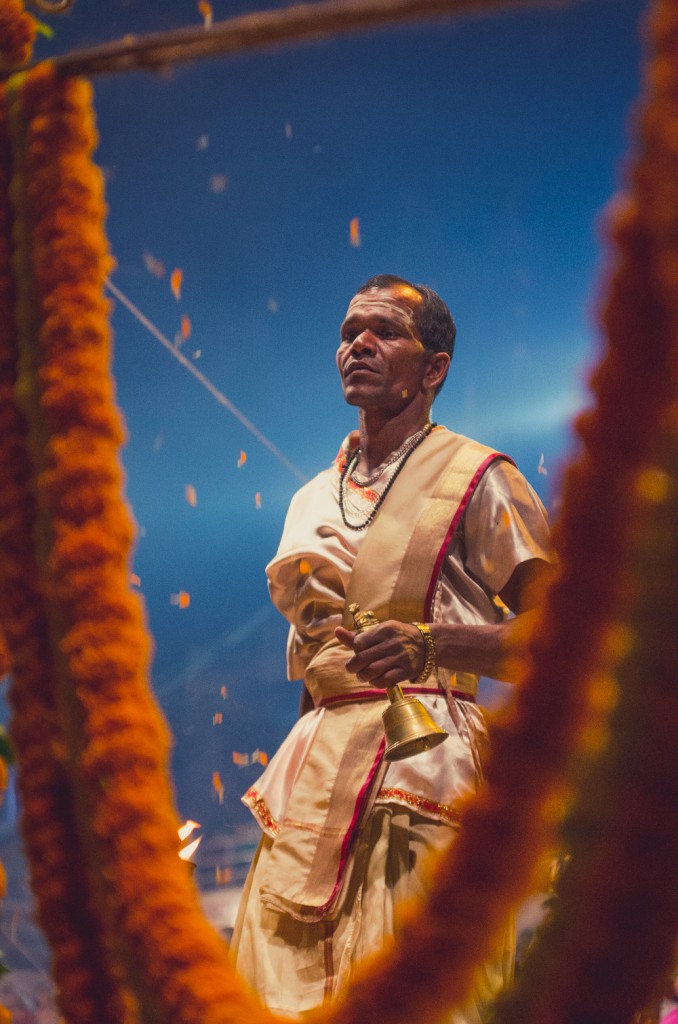
This Pandit (Indian religious scholar) was part of the nightly the Ganga Aarti ritual held on the shore in Varanasi.
India is the birth place of some of the largest religions (such as Jainism, Sikhism, Buddhism and Hinduism), which also means there are countless of holy and holiest places to visit. Being so diverse, India is full of celebrations and festivals all year round, and is the perfect country to get familiar with a broad range of religions, practices, customs and, yes, their parties!
Week 2
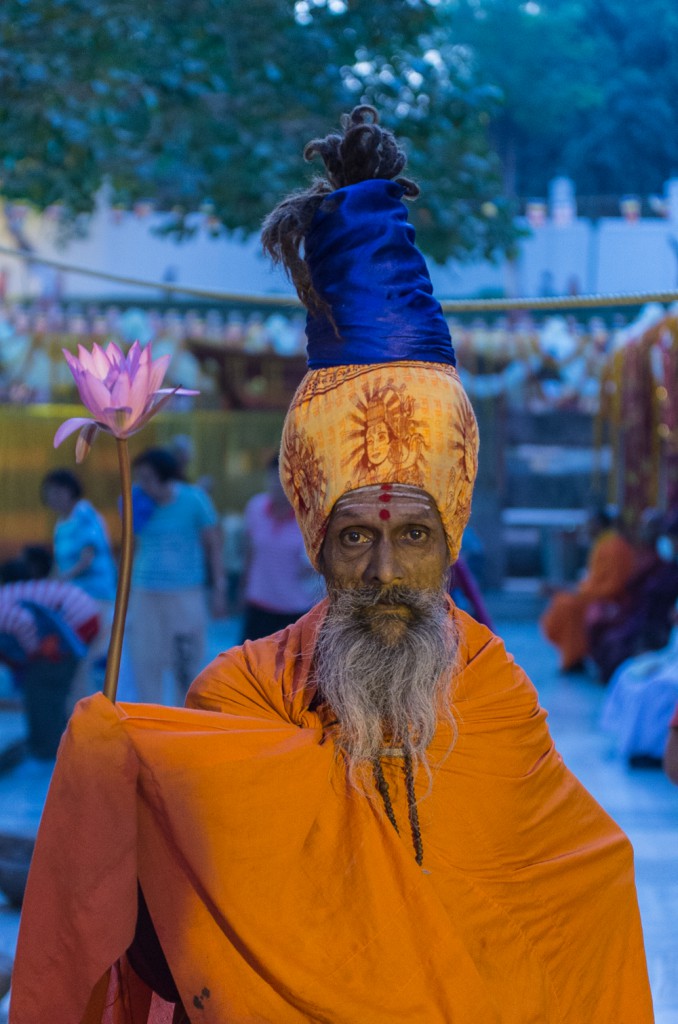
We met this Sadhu (holy man) several days in a row in Bodhgaya, in the temple around the “bodhi tree”, the tree under which the Buddha reached enlightenment. The Mahabodhi Temple was built in honour of this.
Sadhu’s, Sanskrit for “good men”, are holy men (and women) who live to achieve ”moksha” (liberation) through controlling (or abstaining from) all human needs and material luxuries. It’s a tough life, and they life off the generosity of others. Most Sadhu’s wander, to stay detached from things, places and people.
Week 3
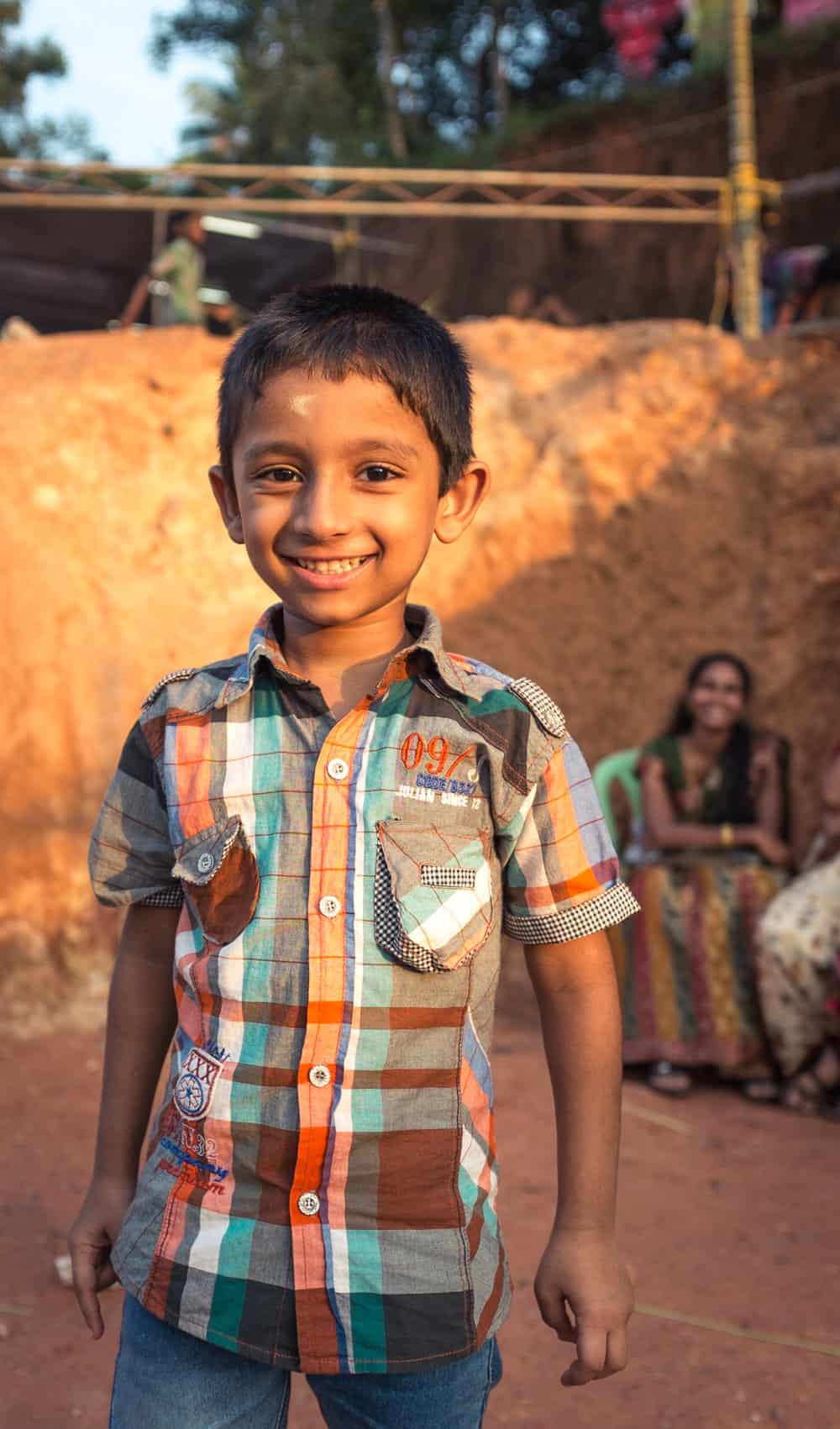
This boy talked to us for 15 minutes and then introduced us to his entire family, who were cheering for him to talk to the only foreigners present. We had come to see a traditional Theyyem ritual, which is a religious ceremony in the southern state of Kerala.
Children are very important in Indian society. Or, actually, family in general is. Marriage (practically always arranged) doesn’t really “count” until the first children are born, and the more kids, the better. Getting married and having children is considered the most crucial thing in life. Once the kids are old enough, they are married off, and grandchildren then become the main focus of the newly extended family.
Week 4
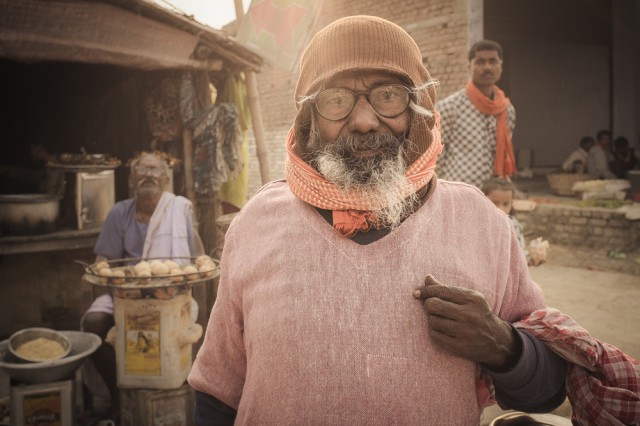
This wonderful-looking older gentleman we met on the Cattle Festival in Sonepur. We have no idea whether he bought cattle, sold cattle, or just came to enjoy the festivities, but we enjoyed having a cup of chai with him.
As with children, older people (especially the tiny, hunched, wrinkly ones) always make for brilliant photos. And in India, people are at least as curious about you as you are about them. Even when without a language in common, smiles and body language are all you need to share a giggle and a moment.
Week 5
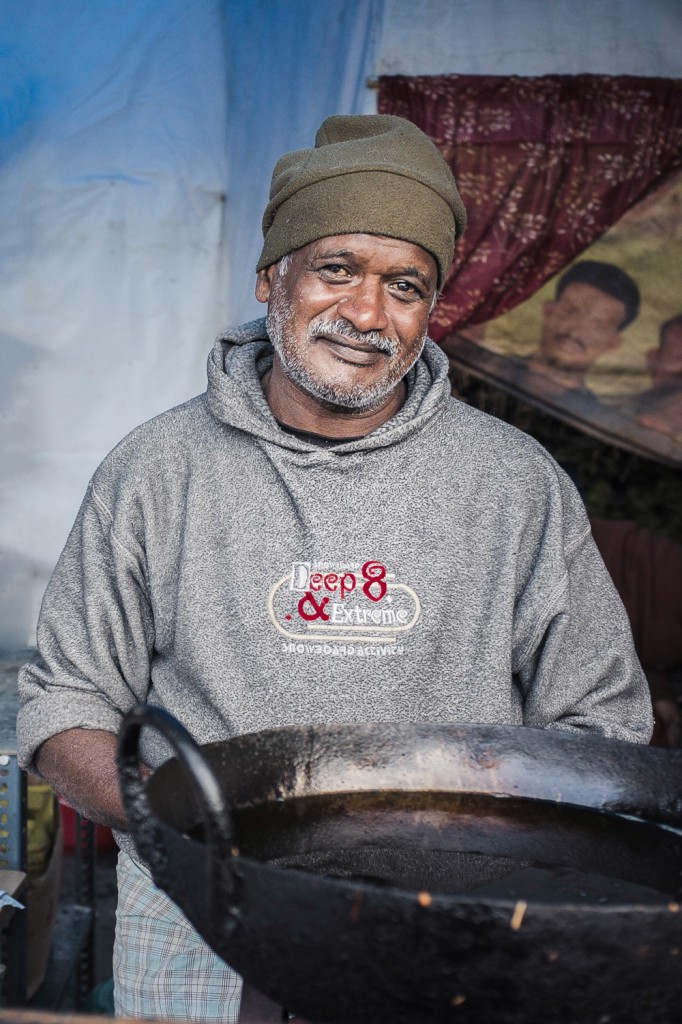
This man was the earliest one to open his stand when we were hungry for some breakfast after our early morning excursion to watch the sunrise over the tea plantations of Munnar. His delicious chai and freshly fried vada’s (an Indian style donut) were exactly what we needed to warm up again.
India cannot be mentioned without the mentioning of food. As a vegetarian myself, India is sheer heaven. Never before have I been able to buy whichever snack from whatever street stall and munch away immediately, without asking or questioning whether it fit my dietary vision. Better yet: the food is really good! Admittedly, lots of sugar and oil is involved, and most of it is fried or deep-fried. But as a traveler with a tummy not quite used to local hygiene, freshly (deep)fried things are as safe as it gets.
Week 6
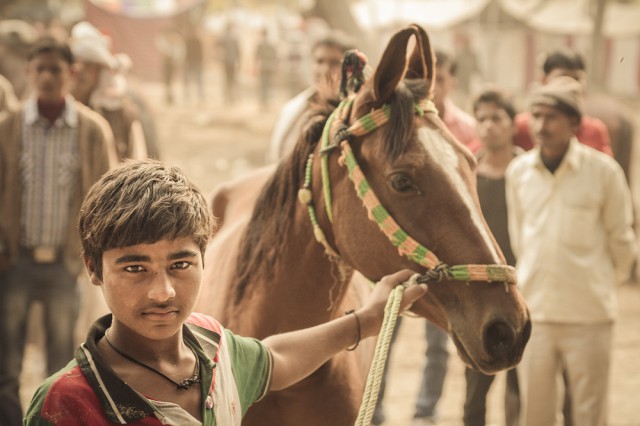
These boys were also present on the Cattle Festival in Sonepur. How proud they were that someone wanted to take pictures of them and their horses!
In a world where income, food and thus life is dependent on cattle, the animals are often the family’s most important possession. They are fed, bathed, adorned and adored more than any other family member. This is not just true for the (in)famous Indian “holy cow!”, but for all cattle. There are local festivals where they are dressed up and paraded around, and yearly cattle fairs are big events, with carnivals, week-long parties, races (and betting), markets and food fests as part of the larger social happening.
Week 7
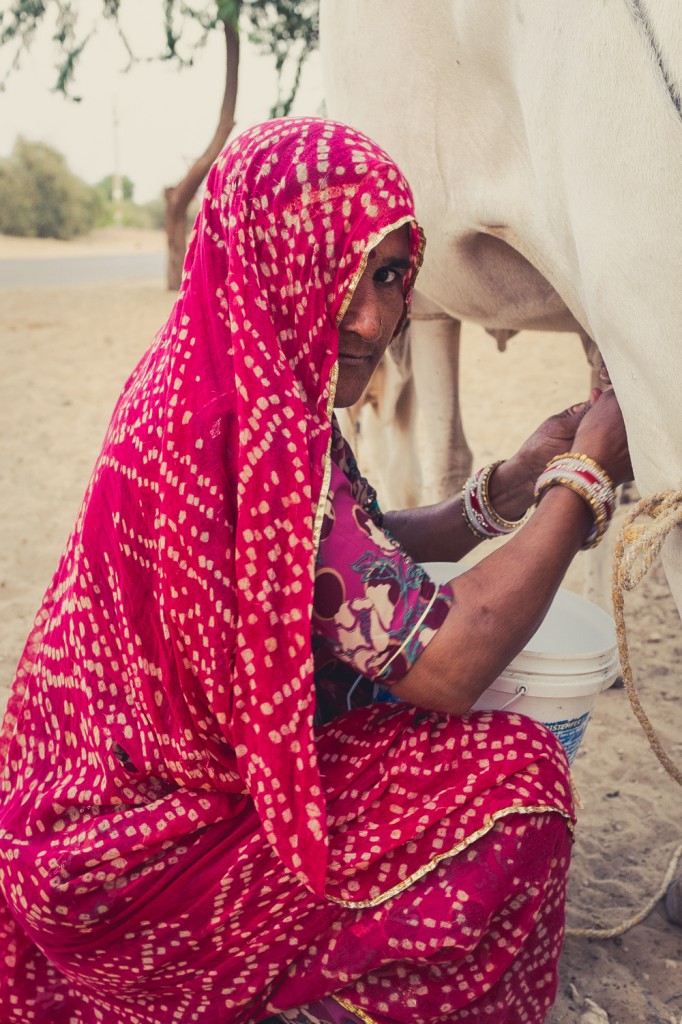
On a short stop between Bikaner and Jaisalmer, the bus driver bought his daily ration of fresh milk to re-sell in the next big city. He has an agreement with this farmer to provide him with the freshest milk twice a day. This has enabled her to send her two sons to school.
While the “metro cities” (India’s metropolises) are huge and modern, the largest part of India is very traditional. The country is enormous, which means that most of it is filled with villages, large parts of cultivated lands and large parts of nature. These areas are inhabited by many different tribes. All tribes have their own culture, language and characteristics, such as specific jewelry, clothing and tattoos.
Week 8
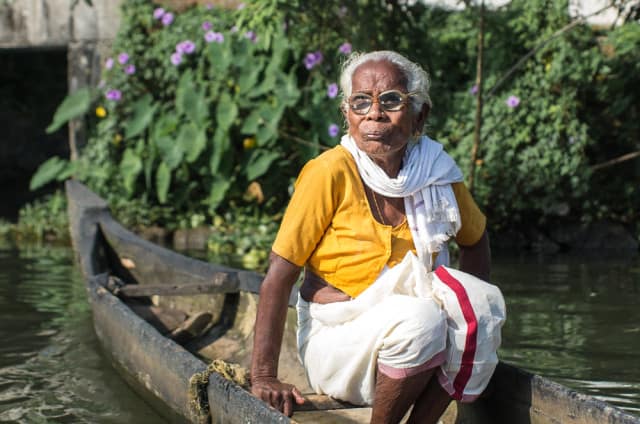
At 7 clock in the morning we kayaked past this beautiful lady. An early morning Kayak tour of the Alleppey backwaters is the perfect way to watch the enormous livelihood of this unique area slowly come to life.
Kerala, one of the Southern states, is known for its backwaters. The inlands are connected to the seaside and to the main rivers through the many meandering streams and lakes. Here, life happens on, in and around water. The backwaters are used to wash dishes in, bathe in, as a toilet, to irrigate the fields, as infrastructure and for tourism, just to name a few.
Authors
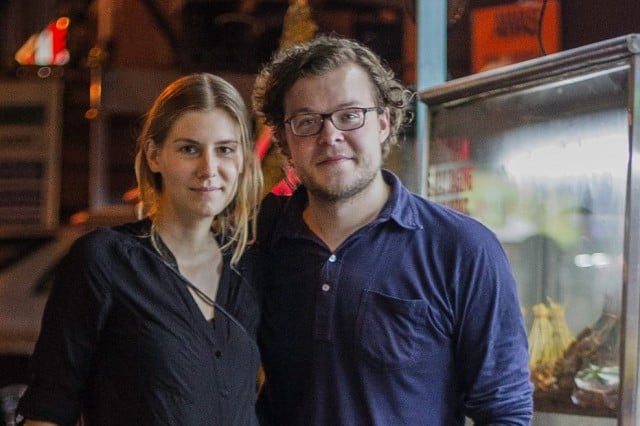
Alex and Zoe (www.out-n-about.de) do not only travel to see the country but to meet people and learn their stories. He takes the photos, she writes the words. You can follow their latest project on Google+ or Facebook where you can also find many more images and stories about India.
